We’re using the space below to keep tabs on each NBA team’s second round pick for 2026, continually updating it as necessary throughout the year. Our list of traded first-round picks for 2026 can be found right here.
We’ve listed all 30 teams here, so even if a team hasn’t traded its second round pick, that will be noted. We’ll also provide details on protections for each traded pick, including what happens to the pick in 2027 if it doesn’t change hands in 2026.
Here’s the full breakdown on the status of each 2026 second-round pick:
Atlantic
- Boston Celtics: Traded to Hawks or Grizzlies.
- Details outlined at bottom of article.
- Brooklyn Nets: Traded to Heat (top-55 protected).
- If this pick lands in its protected range, the Nets will keep it and their obligation to the Heat will be extinguished.
- New York Knicks: Possibly traded to Celtics or Wizards.
- Details outlined at bottom of article.
- Philadelphia 76ers: Traded to Thunder, Suns, or Wizards.
- The Thunder will receive the most favorable pick of the Sixers’, Mavericks, and Thunder’s second-rounders; the Suns will receive the second-most favorable of the three; the Wizards will receive the least favorable.
- Toronto Raptors: Traded to Pacers (top-55 protected).
- If this pick lands in its protected range, the Raptors will keep it and their obligation to the Pacers will be extinguished.
Central
- Chicago Bulls: Traded to Rockets.
- Cleveland Cavaliers: Own pick.
- Detroit Pistons: Traded to Celtics, Magic, or Knicks.
- The Celtics will receive the most favorable pick of the Pistons’, Bucks’, and Magic’s second-rounders; the Magic will receive the second-most favorable of the three; the Knicks will receive the least favorable.
- Indiana Pacers: Traded to Hawks, Grizzlies, Spurs, Timberwolves, or Nets.
- Details outlined at bottom of article.
- Milwaukee Bucks: Traded to Celtics, Magic, or Knicks.
- The Celtics will receive the most favorable pick of the Pistons’, Bucks’, and Magic’s second-rounders; the Magic will receive the second-most favorable of the three; the Knicks will receive the least favorable.
Southeast
- Atlanta Hawks: Traded to Nets.
- Charlotte Hornets: Traded to Kings or Pistons.
- The Kings will receive this pick if it lands between 31-55; the Pistons will receive if it lands between 56-60. The Hornets’ obligation to whichever team doesn’t receive the pick will be extinguished.
- Miami Heat: Traded to Hawks, Grizzlies, Spurs, Timberwolves, or Nets.
- Details outlined at bottom of article.
- Orlando Magic: Possibly traded to Celtics or Knicks.
- The Celtics will receive the most favorable pick of the Pistons’, Bucks’, and Magic’s second-rounders; the Magic will receive the second-most favorable of the three; the Knicks will receive the least favorable.
- Washington Wizards: Own pick.
- If the Wizards’ first-round pick lands in the top eight, the Wizards would send the Knicks their second-rounder.
Northwest
- Denver Nuggets: Traded to Hornets or Timberwolves.
- The Hornets will receive the most favorable pick of the Nuggets’ and Warriors’ second-rounders; the Timberwolves will receive the least favorable of the two.
- Minnesota Timberwolves: Traded to Celtics, Knicks, or Wizards.
- Details outlined at bottom of article.
- Oklahoma City Thunder: Own pick.
- The Thunder have the ability to swap their own pick for the Sixers’ or Mavericks’ second-rounder. The Thunder will receive the most favorable pick of the Sixers’, Mavericks, and Thunder’s second-rounders; the Suns will receive the second-most favorable of the three; the Wizards will receive the least favorable.
- Portland Trail Blazers: Traded to Celtics, Spurs, or Wizards.
- Details outlined at bottom of article.
- Utah Jazz: Traded to Spurs or Bucks.
- The Spurs will receive this pick if it lands between 31-55; the Bucks will receive if it lands between 56-60. The Jazz’s obligation to whichever team doesn’t receive the pick will be extinguished.
Pacific
- Golden State Warriors: Traded to Hornets or Timberwolves.
- The Hornets will receive the most favorable pick of the Nuggets’ and Warriors’ second-rounders; the Timberwolves will receive the least favorable of the two.
- Los Angeles Clippers: Traded to Nets or Grizzlies.
- Details outlined at bottom of article.
- Los Angeles Lakers: Traded to Raptors.
- Phoenix Suns: Traded to Wizards.
- Sacramento Kings: Own pick.
Southwest
- Dallas Mavericks: Traded to Thunder, Suns, or Wizards.
- The Thunder will receive the most favorable pick of the Sixers’, Mavericks, and Thunder’s second-rounders; the Suns will receive the second-most favorable of the three; the Wizards will receive the least favorable.
- Houston Rockets: Own pick.
- If the Rockets’ first-round pick lands in the top four, the Rockets would send the Thunder their second-rounder.
- Memphis Grizzlies: Traded to Clippers or Trail Blazers.
- The Clippers will receive this pick if it lands between 31-42; the Trail Blazers will receive if it lands between 43-60. The Grizzlies’ obligation to whichever team doesn’t receive the pick will be extinguished.
- New Orleans Pelicans: Traded to Celtics, Spurs, or Wizards.
- Details outlined at bottom of article.
- San Antonio Spurs: Possibly traded to Timberwolves.
- Details outlined at bottom of article.
Here are the details on how the Knicks‘, Timberwolves‘, Trail Blazers‘, and Pelicans‘ second-round picks will be distributed:
The Celtics will receive the most favorable of the following picks:
- The Knicks’ second-round pick.
- The Timberwolves’ second-round pick.
- The Trail Blazers’ second-round pick.
- The Pelicans’ second-round pick.
The Knicks will receive the least favorable of the following picks:
- The Knicks’ second-round pick.
- The Timberwolves’ second-round pick.
The Spurs will receive the least favorable of the following picks:
- The Trail Blazers’ second-round pick.
- The Pelicans’ second-round pick.
The Wizards will receive the least favorable of the following picks:
- The most favorable of the Knicks’ and Timberwolves’ second-round picks.
- The most favorable of the Trail Blazers’ and Pelicans’ second-round picks.
Here are the details on how the Celtics‘, Pacers‘, Heat‘s, and Clippers‘, and Spurs‘ second-round picks will be distributed:
The Grizzlies will receive the most favorable of the following picks, while the Nets will receive the least favorable:
- The Clippers’ second-round pick.
- The most favorable of the Celtics’, Pacers’, and Heat’s second-round picks.
The Spurs will receive the most favorable of the following picks, while the Timberwolves will receive the least favorable:
- The Spurs’ second-round pick.
- The least favorable of the Pacers’ and Heat’s second-round picks.
The Hawks will receive the least favorable of the following picks:
- The Celtics’ second-round pick.
- The most favorable of the Pacers’ and Heat’s second-round picks.
Information from RealGM was used in the creation of this post.
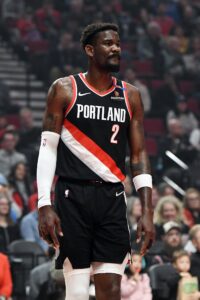
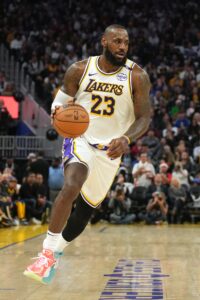 Within that statement, Paul said that LeBron “knows the Lakers are building for the future,” wants to contend for a title, and understands “the difficulty in winning now while preparing for the future.”
Within that statement, Paul said that LeBron “knows the Lakers are building for the future,” wants to contend for a title, and understands “the difficulty in winning now while preparing for the future.”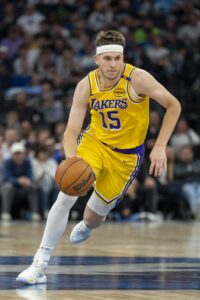 While the Lakers only have 14 players on standard guaranteed contracts, they don’t currently have a path to adding a 15th man, since they’re only operating $1.1MM away from their first-apron hard cap. If they don’t shed salary by making a trade or buying out a player, they’d have to wait until at least mid-January to sign a veteran free agent.
While the Lakers only have 14 players on standard guaranteed contracts, they don’t currently have a path to adding a 15th man, since they’re only operating $1.1MM away from their first-apron hard cap. If they don’t shed salary by making a trade or buying out a player, they’d have to wait until at least mid-January to sign a veteran free agent.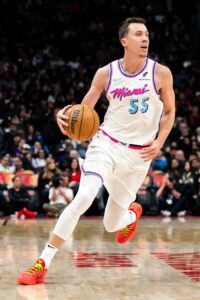
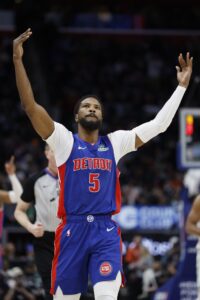 Heading into the offseason, there was speculation that Detroit would try to keep the band together by re-signing free agents
Heading into the offseason, there was speculation that Detroit would try to keep the band together by re-signing free agents 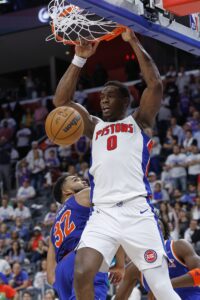 Detroit is currently carrying 13 players on guaranteed contracts, plus Green on a partially guaranteed minimum-salary deal, so even if they don’t do anything major before opening night, the Pistons could add a 15th man in free agency.
Detroit is currently carrying 13 players on guaranteed contracts, plus Green on a partially guaranteed minimum-salary deal, so even if they don’t do anything major before opening night, the Pistons could add a 15th man in free agency.
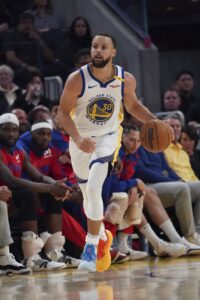 The top name on our list remains unchanged, as
The top name on our list remains unchanged, as